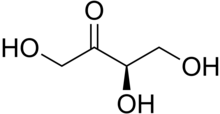Self-tanner
A self-tanner is a cosmetic product that is used to tan skin without exposure to the sun.
application
An even, natural-looking tan is difficult to achieve. The degree of tan can vary in intensity on different areas of the skin, so that an unintentionally blotchy complexion arises. Sometimes this is referred to as a “chipmunk effect”. Particular problem areas when using self-tanner are the knees and elbows, as the callus is thicker here and the color shade can therefore be darker. Scars and skin irregularities also become more prominent with a tint. To prepare the skin and to prevent irregularities, a previous peeling is useful. The consumer can choose between different tanning intensities. In addition to the different color nuances, a distinction is made between tanners for the face and tanners for the body. Self-tanners for the face are usually of a creamy consistency, which enables a more precise application. Self-tanners for the body are thinner, as the self-tanner can be spread more easily over larger areas.
Better, more even tanning results can be achieved with tanning showers. The body is finely sprayed on all sides with a self-tanner while standing.
ingredients
The most common substance used in self-tanners is dihydroxyacetone (DHA; INCI : Dihydroxyacetone). It is an endogenous substance that occurs as an intermediate product in the carbohydrate metabolism. It is harmless and has no systemic effects. The self-tanning cream is therefore a very harmless method of tanning.
Another self-tanning substance is erythrulose . It is a naturally occurring sugar in plants and lichens. In contrast to dihydroxyacetone, erythrulose has better chemical stability. Skin-irritating cleavage products are produced much less frequently, which means that the sugar is classified as better skin-friendly.
Combinations of dihydroxyacetone and erythrulose are also used.
effect
Self-tanners contain dihydroxyacetone or erythrulose, which tan the skin without the influence of the sun.
Dihydroxyacetone penetrates into the stratum corneum and forms in the epidermis by reaction with the main component keratin melanin-like dyes , which melanoidins hot. After 2 to 4 hours, a yellowish to brown color is achieved, which cannot be washed off and does not rub off on clothing. After two to four days, the tint will fade and after about two weeks it will have completely disappeared as the skin is constantly renewing itself, so that the color will eventually grow out completely. It can be re-tinted at any time to keep the color.
D-erythrulose achieves a more even tan, as the color depends only little on the amount applied and the structure of the skin. The tanning principle is comparable to that of dihydroxyacetone, although the tanning process is slower and not as intense.
Unless the self-tanning preparation also contains a UV filter , the tan achieved does not offer any sun protection , as it is only a staining of the horny layer.
literature
- Sabine Ellsässer: Body care and cosmetics . A textbook for PTA training and advice in pharmacy practice. 2. revised and expanded Edition Springer Medizin Verlag, Heidelberg 2008, ISBN 978-3-540-76525-7 ( limited preview in the Google book search).
- Marina Bährle-Rapp: Springer Lexicon Cosmetics and Body Care . 4th revised and expanded edition. Springer-Verlag, Berlin, Heidelberg 2012, ISBN 978-3-642-24687-6 ( limited preview in the Google book search).
Individual evidence
- ↑ a b c d e Stiftung Warentest: Self-tanner - Away with white calves - Stiftung Warentest. Retrieved May 2, 2019 .
- ↑ a b c d e f g h i Sabine Ellsässer: Body Care and Cosmetics: A textbook for PTA training and advice in pharmacy practice . 2. revised and expanded Edition Springer Medizin Verlag, Heidelberg 2008, ISBN 978-3-540-76525-7 , p. 233 .
- ↑ a b Marina Bährle-Rapp: Springer Lexicon Cosmetics and Body Care . 4th revised and expanded edition. Springer-Verlag Berlin Heidelberg, Berlin, Heidelberg 2012, ISBN 978-3-642-24687-6 , pp. 520 .
- ↑ Marina Bährle-Rapp: Springer Lexicon Cosmetics and Body Care . 4th revised and expanded edition. Springer-Verlag Berlin Heidelberg, Berlin, Heidelberg 2012, ISBN 978-3-642-24687-6 , pp. 163 .


